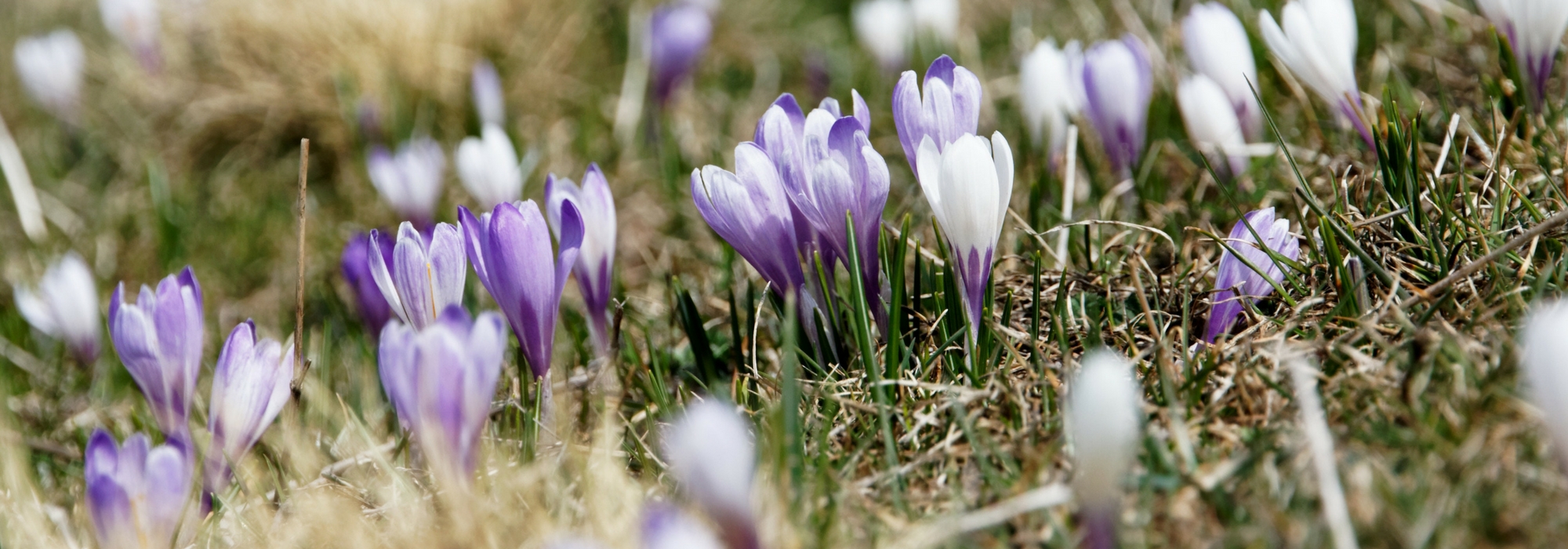
Crocus: how to plant them?
our tips for installing them in the garden
Contents
Crocuses are among the first plants to flower in spring, sometimes even as early as the end of winter! They herald the renewal of the garden with their delicate shades of yellow, purple, or white. This small flower, with great simplicity, adds a splash of colour at the base of trees, in the middle of short grass meadows, or in window boxes. Crocuses are capable of naturalising and forming vast tapetum of flowers.
Little susceptible to diseases, they are easy to grow, require little attention, and take up no space! They bloom in spring and then disappear, humbly making way for other plants. They are perfect for accompanying snowdrops or leucojum, which offer a delicate white flowering at the beginning of spring. They are easy to pair with other spring bulbs, such as daffodils and chionodoxas. Discover all our tips for successfully planting them in your garden!
When to plant crocuses?
We advise you to plant them in autumn, from September to November, ideally in October. They will have time to settle in and bloom from the beginning of spring.
Where to plant them?
Plant them in full sun, in well-draining soil. They dislike excess moisture, which can cause the bulbs to rot. Unfussy, they cope well with drought and tolerate poor soils. They prefer rather light terrains. If your soil is clayey, add gravel or pumice to make it more permeable. Crocus tommasinianus tolerates shaded situations. Crocuses also adapt well to pot planting, rockeries, or green roofs!
As it is a small, very simple flower, we suggest planting them in groups of at least 5 to 10 bulbs. You will achieve a more beautiful effect! Although mixed varieties of different colours are commercially available, we recommend grouping crocuses in the same shades for a more harmonious appearance.
Remember to place markers (for example, a label or a stake) to remind you of the location of your crocuses until they have emerged! This will prevent you from accidentally hitting them with a spade if you need to work in the bed before the crocuses are visible…
Discover other Spring Crocus
View all →Available in 1 sizes
Available in 1 sizes
Available in 0 sizes
Available in 1 sizes
Available in 1 sizes
Available in 0 sizes
Available in 1 sizes
Available in 0 sizes
Available in 0 sizes
Available in 1 sizes
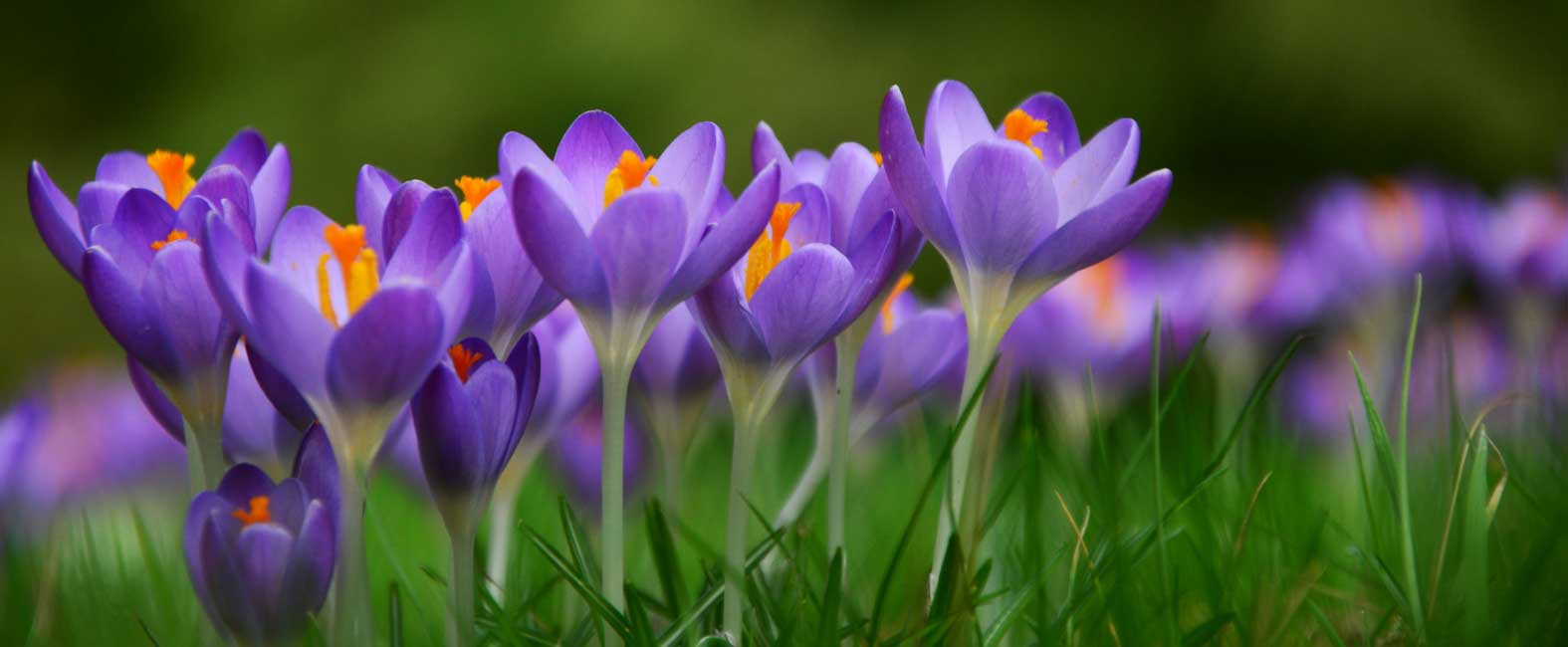
How to plant them?
Planting in the open ground
- Position your bulbs in the soil. You can toss them and plant them where they fall for a fairly natural look!
- Dig a hole for each bulb, about ten centimetres deep.
- Optionally drain the bottom with a layer of gravel.
- Place the bulbs with the point facing upwards.
- Cover with soil, then firm down. There is no need to water.
Mass Planting
This technique allows for large patches of colour. It creates a denser effect. Dig a very wide hole, about ten centimetres deep, and place all the bulbs in a group but not touching each other. If you are planting in a short grass meadow, you can lift a patch of turf, position the bulbs, and then replace the turf.
Pot planting
Crocuses adapt well to pot culture. You can thus place them on your terrace, balcony, or windowsill, in the sun. Preferably choose a container that is wide but shallow.
- Prepare the substrate by mixing potting soil with a bit of sand.
- At the bottom of the pot, place a layer of drainage with gravel or clay balls.
- Then add the substrate, and plant your bulbs, in the correct orientation, with the point facing upwards.
- Cover them with a layer of potting soil.
- Firm down, then water.
You have the option to combine them with other bulbous plants (daffodils, tulips, etc.) and to layer multiple bulbs in the same pot, planting the larger ones below and the smaller ones above. For example, you can position tulip bulbs, then cover them with about 5 cm of substrate, then plant hyacinths or daffodils, cover them, and finally add the crocuses. Cover one last time and then water.
- Subscribe!
- Contents































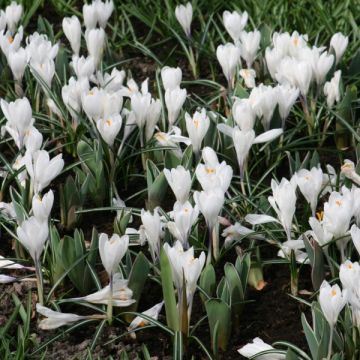
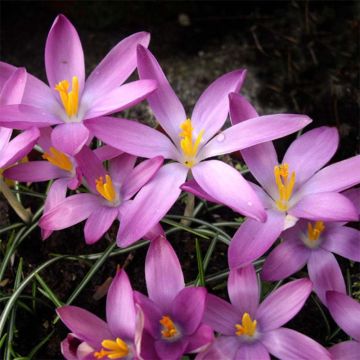

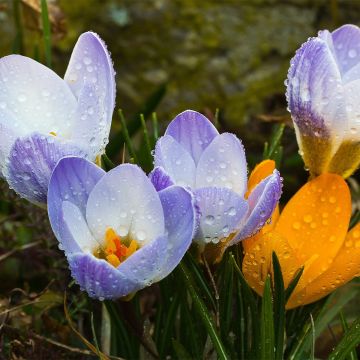
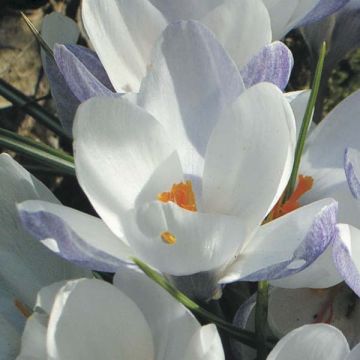

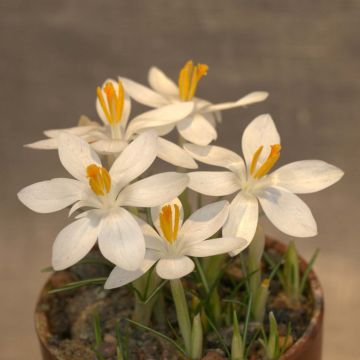
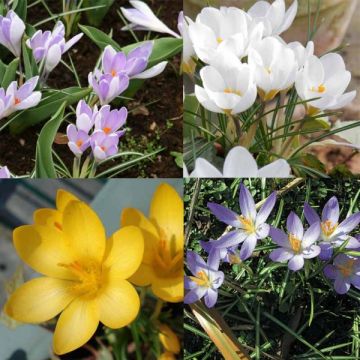

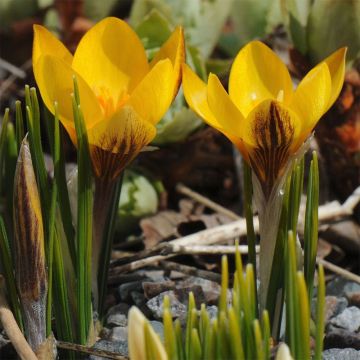
Comments